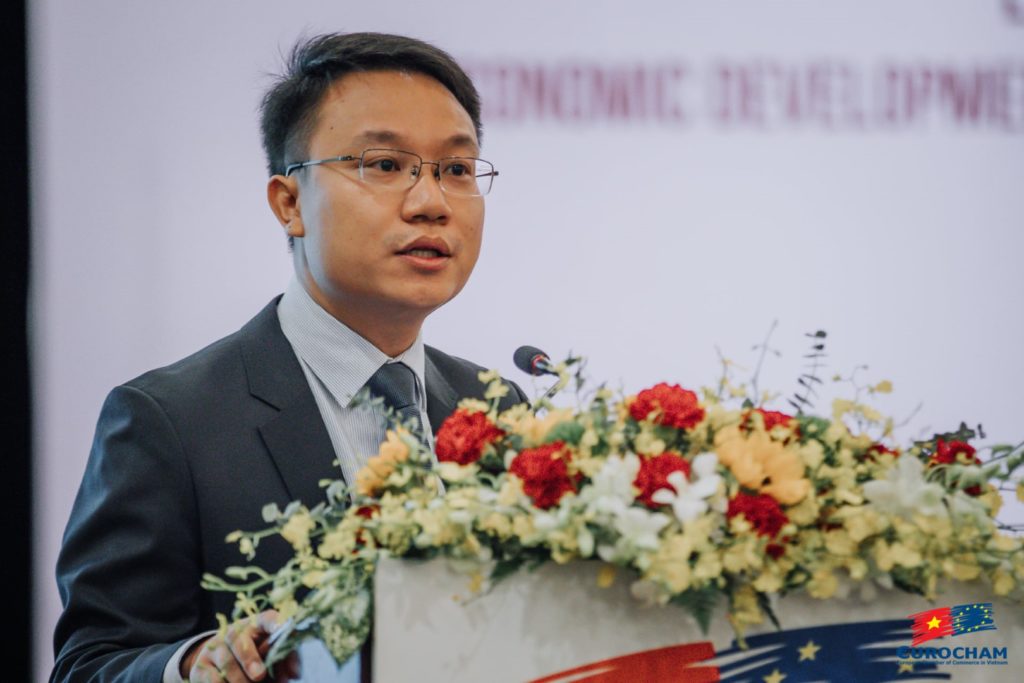On June 30, 2019, Vietnam and the EU signed the European-Vietnam Free Trade Agreement (EVFTA), ending a long negotiation with a historic milestone in the longstanding partnership between the two sides.
According to the General Statistics Office of Vietnam, in the first quarter of 2019, the EU is Vietnam’s second most significant export market, increasing 2.5% year-on-year to reach USD 10.2 billion. It has also remained among Vietnam’s top foreign investors, with an FDI stock totaling USD 23,9 billion with 2,133 projects in 2018. Meanwhile, as one of the fastest-growing economies in Asia with a “golden population structure” and an auspicious consumer market of around 97 million citizens, Vietnam has recently become the EU’s second-largest trading partner in ASEAN only after Singapore.
Now, with what the EU regards as “the most ambitious free trade deal ever concluded with a developing country” in hand, both sides would enjoy not only tariff deduction but also a lot of non-tariff relieves, thus a substantial boost in trade and investment. From the standpoint of Vietnam, EVFTA is expected to not only yield economic benefits, but also become a stepping stone for the country to conduct social reforms, move forward in its political strategies, and secure a position in the dynamic international market.
A BOOST TO THE ECONOMY
Once the EVFTA is ratified and comes into force, more than 99% of tariff lines will be eliminated, which will help in boosting Vietnam’s exports and GDP growth. Statistics aside, an FTA with the EU will allow Vietnam to deeply integrate with a highly-developed and prosperous market, thus enhancing not only the quantity of goods/services exported but also value added for Vietnamese products.
From a macroeconomic perspective, EVFTA will result in improved specialization and efficiency for both Vietnam and the EU since each party has different comparative advantages. Vietnam is observing an extension in its comparative advantage from mainly textiles, garments, footwear, agricultural and aquatic products to electronic products like telephone sets, computers, etc. Having had increasing attention from foreign investors, Vietnam can expect greater development, international technical expertise, and income level. According to statistics from the Ministry of Labor – Invalid and Social Affairs (MOLISA), right after the EVFTA comes into force, the labor force in some sectors will increase, for example in the mining industry the increase will be 3.41% per year; textile and garment increase of 1.53%; waterway transport (3.7%); metal production (2.65%), machine production (2.49%). The income level of labor force is also expected to increase in period 2020 -2035, among which the low skilled labor forces will benefit the most. It is estimated that the average income level of Vietnamese work forces will increase by 3% from the EVFTA impact.
However, all these economic benefits should, by no means, be taken for granted. The EU is well-known as a picky market with very high quality standards as well as high requirement on its core value in labor right and sustainable development. In addition, rules of origin is an important matter for companies, and it is essential that Vietnam’s exporters comply with such rules to qualify for tariff elimination and, more importantly, gain Vietnam further reputation as a professional and reliable player in global trade.
IMPROVED SOCIAL VALUES – A BETTER LIFE FOR THE WORKFORCE
Same as CPTPP, EVFTA is known as a “new generation” agreement for its comprehensive requirements, among which includes sustainability and implementation of International Labour Organization (ILO) standards, with which Vietnam has been struggling over the years. In compliance with these agreements in general and EVFTA in particular, Vietnamese authorities are working hard to revise the Labour Code according to ILO standards. Of note, the revision focuses on eliminating discrimination in terms of employment and occupation like gender, age, racial, and religious discrimination and further boosts the right to collective bargaining and promoting the freedom of labour association.
All in all, we are entitled to believe that Vietnam will take the commitment to EVFTA as a motivation towards overall improved community wellbeing.
A STRATEGIC MOVE TO GLOBAL VALUE CHAIN INTEGRATION
This agreement brings an opportunity to promote EU-Vietnam value chain integration via the increase of the EU’s direct investment into Vietnam and the rise of trade in intermediate goods and services between the EU and Vietnam. This integration process will improve the EU’s access into a growing assembly hub in ASEAN or even Asia, and improve Vietnam’s economic relationship with major industrial hub and investors in Asia. It is expected that the EU companies will take lead in this process mostly by setting up their business activities in Vietnam to integrate into their existing supply chains, and moreover it is also an important step for them to look at the large Asian market. Not only the EU companies, but it is also foreseen that those from third countries will set up production in Vietnam to enter the EU market thanks to the preferential treatment of the agreement. This is an opportunity for Vietnam companies to plug themselves into the value chains of such leading companies. We foresee that there will be a greater production sharing within the region, particularly in labor intensive activities.
However, it is still a question mark whether Vietnamese companies could grab this chance to be well engaged in such value chains organized by the EU companies, given their limitations in technology, capital, human resource, corporate governance, etc. It could be a good move that Vietnamese companies might first look at sectors that are under interests of the EU companies and under the long term development of Vietnam so far such as footwear, leather, or textile and garments. In these sectors, we believe SMEs will be main beneficiaries of the EU sponsored value chains. To achieve this, the Vietnamese Government needs to do more, first to ensure that the business environment is attractive enough to attract he investment flow of investors from EU and third countries, and second to facilitate the Vietnamese SMEs in this integration process.
Last but not least, the fact that Vietnam is the second country in the whole ASEAN to secure a deal of this kind with the EU has already propelled Vietnam to a higher position across Asia and around the globe. It is crucial that Vietnam’s government, businesses, policymakers, and individual citizens make their best preparation to welcome this valuable integration into the global value chain.
Author
Nguyen Hai Minh is Partner in charge of Tax & Business Advisory Services of Mazars Vietnam.
With more than 12 years of professional experience at one of the Big4 and Mazars, Minh has developed into one of the leading Tax advisors in the Vietnamese market, with class leading skills particularly in International Tax, Transfer Pricing, and corporate restructuring. He is currently a member of Vietnam Tax Consultants’ Association (VTCA) and also holds the Practicing Certificate for tax procedures in Vietnam.
With his extensive experience in tax and legal areas, Minh is a successful speaker at seminars/ conferences for clients and he also provides teaching and training courses at leading financial and accounting training organizations of Vietnam.
Mr. Hai Minh can be reached at office@ceecvn.org

